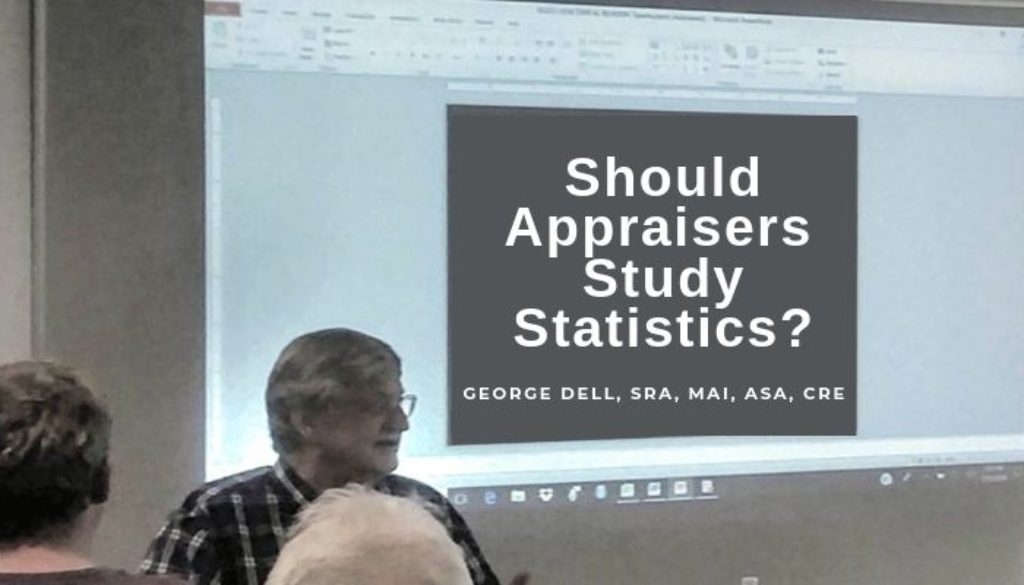Statistics for appraisers started to become a hot topic some 15+ years ago.
I was more involved with the Appraisal Institute then, and often argued that with the changes in data sources—appraisers would have to learn to apply statistics. Around 2003, the AQB (Appraiser Qualifications Board) revised qualifying education to include the requirement for Finance, Statistics, and Valuation Modeling class. Although I was not solicited to write this class, I was put on the development team, which reviewed and suggested edits and improvements. The class had little on valuation modeling, and a lot about non-useful inferential statistics. This disturbed me. I later declined to teach this class as my integrity was challenged.
Although my background includes many graduate-level statistics classes, my greater influence was from the world of micro-economics and econometrics, from both San Diego State, and The University of California in San Diego. In particular, the classes at SDSU were oriented toward applied econometrics. In each case, my appraiser mind-set found the realities of how “statistics” applied to valuation to be quite different from what ended up in appraiser qualifying education.
In particular, I was already used to the fact that for both general and residential work, the data available to me included all, or substantially all, the sales in my area. I benefited from the fact that San Diego public records, assessor information, and even GIS (geographic information) was also ahead of data availability and quality in most other parts of the country. But one thing stood out. There was a conflict between what I was being taught in most of the PhD-level stats classes, and the reality of what I saw as a practicing appraiser.
The conflict was simple, yet convoluted by a belief system. The confusion mostly has to do with the difference between a sample, and a population.
The reality was that for appraisal, the relevant data set is the competitive sales. It’s the set of sold properties. This is the population. It’s not all the houses in a neighborhood. It’s not all the income properties in a city or a state. It is only those that sold, and are actually options for a potential buyer! Houses in a neighborhood are no more part of the market than the apple in my refrigerator is part of the market for apples! It is not.
This I learned in econometrics classes: You have to deal with actual transactions. Real data. Not all the hypothetical sales that could have taken place if they had been on the market. No make-believe.
Yet what was (and still is) presented in appraiser education is the old inferential statistics. Difficult statistics. Convoluted statistics. The statistics which assume you do not have most all of the sales data. The statistics which pretend natural variation was somehow equivalent to the random sample needed to make inferential statics valid.
What started to be taught was wrong on several counts:
- That the population was some imaginary market bigger than actual competing sales.
- That appraiser-judgement selection of comps was kinda-like a random sample.
- That statistical tests would then show how good your model was.
The reality is different:
- The population is the CMS© (Competitive Market Segment).
- Appraiser judgment is the polar opposite of random selection.
- Statistical tests show only how well a random sample represents a population.
In litigation practice, I have seen this misuse of “statistics” repeatedly. This misuse has no place in legal proceedings.
It’s time for our appraisal organizations to recognize the laws surrounding these fallacies, and cease teaching what has been fully debunked in a statement by the American Statistical Association itself.
Now is the time.

July 3, 2019 @ 5:03 am
Well said – thank you.
July 19, 2019 @ 8:13 am
Exactly……only those sales that are competitive with subject property should be considered as the population that we use when analyzing statistical data……nothing else!
July 19, 2019 @ 1:10 pm
I agree 100%